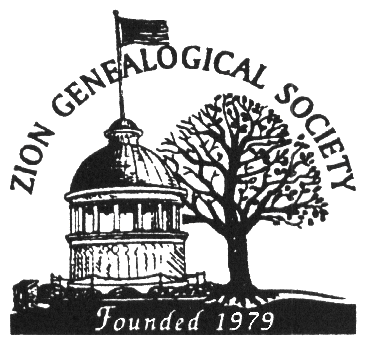A History of Faith and Giving:
Zion - 1900, life was great.
Dr. John Alexander Dowie formed the Christian Catholic Church and founded
Zion as a religious industrial community in order to establish a headquarters
for the church.
In 1906 Dowie was terminally ill, the city had gone bankrupt, and the
city/church properties were in receivership. Population was declining and
unemployment rising. These crises led to confusion and disagreement concerning
the policies of Dowie's successor.
One thing was clear to E. J. Pittaway -- the children of the community
needed a Sunday School. So he and Fred J. Hancock organized "Our Sunday
School" for about 50 boys and girls, who met 9 a. m. Sundays in Elijah
Hospice on the east side of Sheridan at 25th Street.
Later an adult class was formed and taught by a dentist, Dr. C. A. Rominger.
Soon the meeting time changed to 10 a. m. and a praise, prayer and testimony
service added.
During this time of unrest in Zion, the Church - now known as the Christian
Catholic Apostolic Church (Changed in 1997 to Christ Community Church)-
continued its work overseas. In South Africa, Elder Daniel Bryant, who
had formerly worked in Boston, London and Switzerland served as overseer
of the church.
By May 1908, the congregation attending "Our Sunday School"
wanted to add a church service. Considering themselves a part of the original
church, they invited Bryant from South Africa to be their leader.
Upon his arrival, permission was given to use Shiloh Tabernacle for
services on Sundays at 2:30 p. m. Another group, called the Christian Assembly
joined them and all were temporarily known by that name.
Bryant soon formed a committee of seven men to conduct the business
and handle the finances of the congregation. This group included Rominger,
Zion's first judge, V. V. Barnes, Elder John Dietrich and Walter D. Rockafeller.
When the Tabernacle became unavailable for services, the group rented space
on the west side of Sheridan at 25th Street.
In December 1908, "Our Sunday School" had an enrollment of
500. It grew to 750 by May, 1909. On July 4, 1909, the congregation met
in Shiloh Park around the bandstand. At the evening service that day, Bryant
announced the resumption of the name of the original Zion Church and the
adoption of its principles of faith and church government.
Some people had left this congregation when the name changed from Christian
Catholic Apostolic Church to Christian Assembly and another group had withdrawn
to form a separate church officially known as the Christian Assembly. Now
those remaining would organize under the name Christian Catholic Church
with a definite statement of faith, doctrine and practice.
When the administration building went up for sale, the receiver gave
the church a lease for its use until September 1, 1910. Realizing they
needed their own property the church purchased three lots between Emmaus
and Enoch on 27th Street for $1,200. At a mass meeting December 6, 1909,
the entire amount was raised in cash and pledges. In the spring of 1910,
construction began on the basement and it was this basement sanctuary which
was dedicated October 22, 1910 complete with a Kimball pipe organ, which
had been purchased even before construction began. It continued to serve
as the church's only structure until 1948 and earning the name "Goat
House" from its detractors in town.
During the next 20 years, several other splinter groups formed from
the original Zion Church, each using the same name. Thus correspondence
and funds often became misdirected. So in 1910, this particular Christian
Catholic Church chose the new name, Grace Missionary Church.
Pastors who have Serviced Grace Missionary Church 1909 Elder Daniel
Bryant called from South Africa to be the first minister; left in 1917
to serve in Montana 1917 Rev. Ormand E. Lovell from South Africa 1918 Elder
W. H. Cossum left a teaching post in the Zion Preparatory College to take
over. Poor health led to his resignation in 1920. 1920 Reverend Thomas
H. Nelson, a friend of Bryant became pastor. Became Grace Missionary Church
during his missionary and was the first family to live in the new parsonage.
He was quite involved in the local political situation and encouraged separation
of civic government from church control. 1927 Reverend C. Murdoch Neve
for four months 1928 Reverend Frank McKeegan 1931-1933 There was no regular
pastor, however, Dr. Will Hogg of Kentucky and Dr. Paul Rader of Chicago
served. 1933 Reverend Paul J. Goodwin, who earned a doctorate of theology
at University of Chicago while serving. He was active in promoting school
bond issues, which led to the construction of brick buildings for Zion's
elementary and public high schools. He was one of the founders of the Zion
Public Library. From 1936-1938, he was assisted by Reverend Theodore Pfeiffer.
Goodwin left in 1938 for his home state, California
(Excerpted from an article in the Zion-Benton News, June 28,
1984 on the 75th anniversary of the founding of the Grace Missionary Church.)
| 




